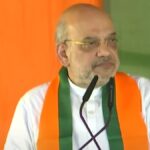The Prime Minister’s Economic Advisory Council (EAC) report has suggested the government to introduce a guaranteed employment program for the urban unemployed. Along with this, the report also said that the Universal Basic Income (UBI) scheme should be implemented to reduce the gap between incomes.
Citing the “heterogeneous nature” of income distribution in the country, the report also recommended steps to increase minimum income and higher government spending on the social sector to protect weaker sections from sudden shocks and “poverty children”. to be prevented from entering”.
The report, titled “State of Inequality in India” and prepared by the Gurgaon-based Competitiveness Institute, was released by EAC Chairman Bibek Debroy on Wednesday. According to the report, “Given the gap between labor force participation rates in rural and urban areas, it is our understanding that the urban counterparts of schemes like MGNREGA which are demand driven and offer guaranteed employment, should be implemented so that the surplus Labor can be rehabilitated.
According to the report, raising the minimum income and introducing a universal basic income are some of the recommendations that can reduce the income gap and ensure equitable distribution of income in the labor market.
“Most importantly, the government should allocate a higher percentage of spending to social services and the social sector to make the most vulnerable populations resilient to sudden shocks and prevent children from falling into poverty.”
The EAC-PM noted that the most important aspect of measuring poverty in a multi-dimensional context requires mapping of mobility in and out of poverty. The council cited the results of three rounds of the Periodic Labor Force Survey (PLFS) to say that over the three years to 2019-20, “barring very minor changes”, the top 1 per cent of the population earned 6-7 per cent of total income. , while the top 10 percent had a third.
For the three years 2019-20, the share of the top 1 per cent population in the country’s total income increased from 6.14 per cent to 6.82 per cent. According to the report, although the income share of the top 10 per cent declined from 35.18 per cent in 2017-18 to 32.52 per cent in 2019-20, it has not resulted in an increase in the wages of the bottom population. “…the top 1 per cent grew by about 15 per cent between 2017-18 and 2019-20, while the bottom 10 per cent registered a decline of about 1 per cent (in their income share).”
Releasing the report, Debroy said that “in India, we have never had comprehensive data and we will never have data measuring income inequality.”







